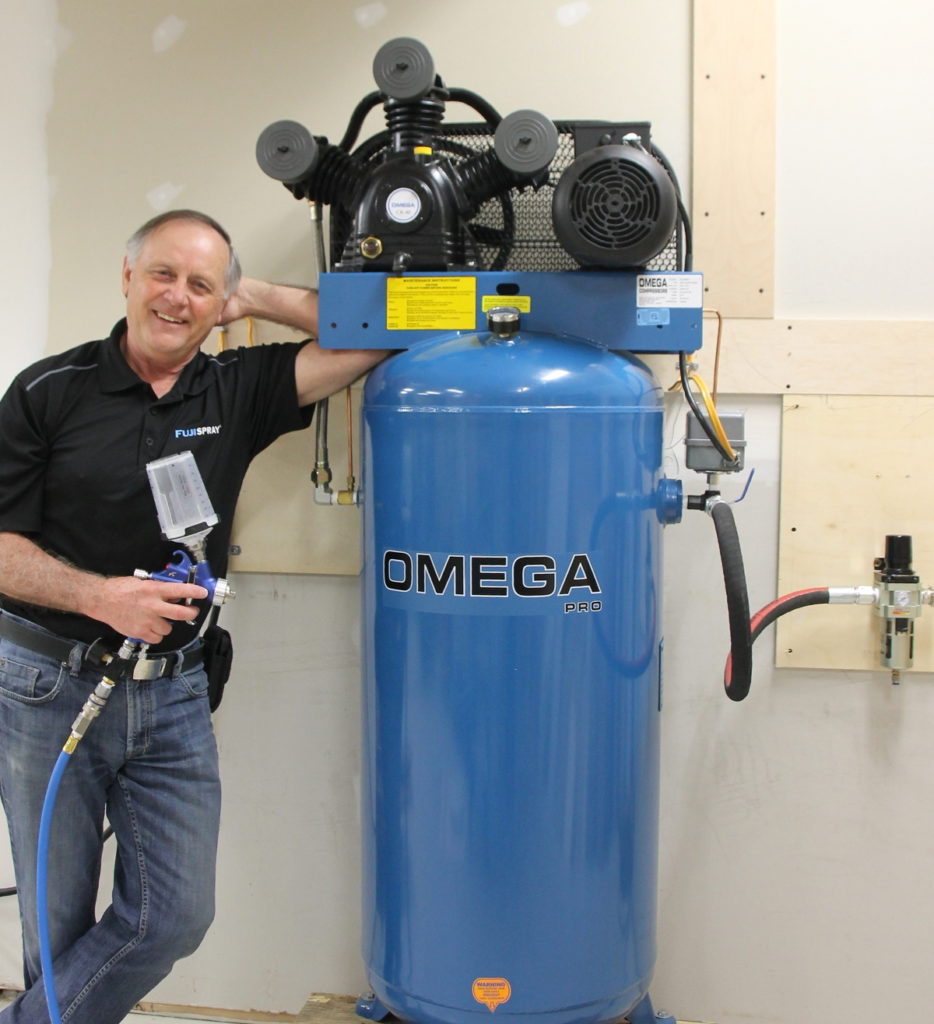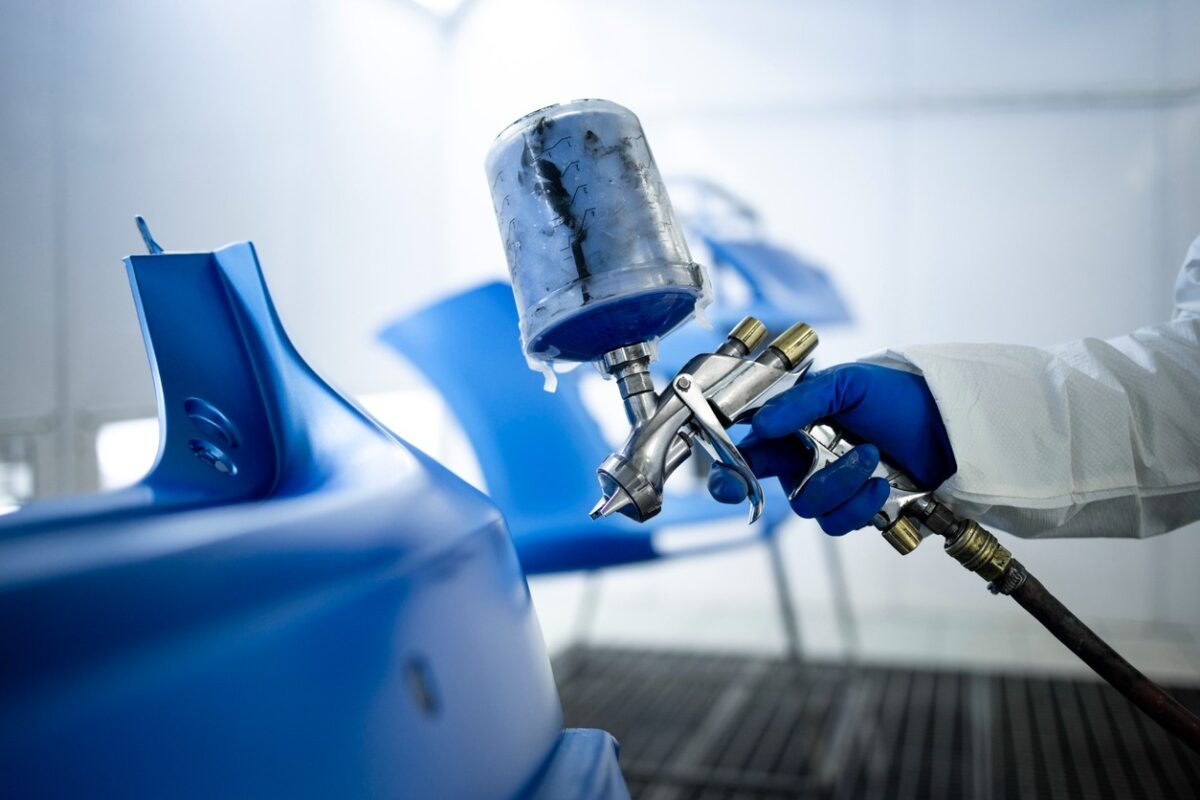The best air compressor for general painting is the DeWalt DWFP55126. A recommended compressor size for painting is 20 gallons.
Painting projects require efficient air compressors. Choosing the right one enhances the quality and speed of your work. The DeWalt DWFP55126 stands out for its reliability and performance. It provides consistent air pressure, essential for smooth paint application. A 20-gallon compressor size is ideal for most painting tasks.
This size offers a balance between portability and capacity. It ensures you have enough air supply for continuous work. Investing in the right compressor saves time and improves results. Always consider factors like PSI, CFM, and tank size. These elements determine the compressor’s suitability for painting projects.
Key Factors To Consider
Choosing the best air compressor for general painting involves understanding key factors. These factors ensure you get the best results for your painting tasks.
Pressure Requirements
Pressure requirements are crucial for a smooth painting experience. Most painting tasks need a specific pressure level to work well.
General painting tasks usually need a pressure range between 15 to 50 PSI. Higher pressure may cause paint splatters and uneven coating.
Ensure your air compressor can maintain this pressure range. Consistent pressure ensures an even paint application.
Air Flow Rate
The air flow rate, measured in CFM (Cubic Feet per Minute), is another key factor. Proper air flow ensures the paint is applied smoothly.
For general painting, an air flow rate between 4 to 6 CFM is ideal. This range supports various paint types and painting tools.
Check your paint gun’s CFM requirements before choosing an air compressor. Matching the CFM ensures optimal performance and finish.
| Factor | Requirement |
|---|---|
| Pressure | 15 to 50 PSI |
| Air Flow Rate | 4 to 6 CFM |
Keep these factors in mind to select the best air compressor. Ensuring the right pressure and air flow rate will give you a smooth painting experience.

Types Of Air Compressors
Choosing the right air compressor for painting can be tricky. The type of air compressor greatly affects your painting results. Here, we will discuss the different types of air compressors. This will help you make an informed decision.
Portable Vs. Stationary
Portable air compressors are small and easy to move around. They are ideal for small painting tasks. You can carry them to different locations easily. Portable compressors are perfect for DIY enthusiasts and hobbyists.
Stationary air compressors are larger and more powerful. They are designed for heavy-duty painting jobs. These compressors are usually fixed in one place. They offer higher power and larger air capacity. Professionals often use stationary compressors for extensive painting work.
| Feature | Portable | Stationary |
|---|---|---|
| Size | Small | Large |
| Mobility | High | Low |
| Power | Low to Medium | High |
| Usage | DIY and Small Tasks | Professional and Large Tasks |
Oil-free Vs. Oil-lubricated
Oil-free air compressors require less maintenance. They are lighter and quieter. These compressors are perfect for indoor painting tasks. Oil-free compressors are also more environmentally friendly.
Oil-lubricated air compressors are more durable and efficient. They can handle prolonged use without overheating. These compressors are ideal for long-term and heavy-duty painting projects. Oil-lubricated compressors might need regular oil changes, but they last longer.
- Oil-Free Compressors: Less maintenance, lightweight, quiet
- Oil-Lubricated Compressors: Durable, efficient, ideal for long-term use
Ideal Compressor Size For Painting
Choosing the right air compressor size is crucial for painting. The compressor’s capacity affects the finish and efficiency. Here’s a guide to help you pick the best size for your painting projects.
Small Projects
For small projects like painting furniture or touch-ups, a smaller compressor works best. Look for a compressor with 1-3 gallons capacity. These compressors are portable and easy to use.
Ensure the compressor has a minimum 2-3 CFM (Cubic Feet per Minute) at 90 PSI (Pounds per Square Inch). This provides a smooth and even paint application.
| Compressor Size | CFM | PSI | Best For |
|---|---|---|---|
| 1-3 gallons | 2-3 CFM | 90 PSI | Small furniture, touch-ups |
Large Projects
Large projects, like painting walls or cars, need a bigger compressor. Opt for a compressor with 10-15 gallons capacity. This ensures a continuous air supply for a flawless finish.
For these projects, choose a compressor with 4-7 CFM at 90 PSI. This provides the power needed for larger surfaces.
| Compressor Size | CFM | PSI | Best For |
|---|---|---|---|
| 10-15 gallons | 4-7 CFM | 90 PSI | Walls, cars, large surfaces |
Using the right compressor size ensures a smooth painting process. Choose wisely to achieve the best results.

Top Air Compressor Brands
Choosing the right air compressor for painting can be daunting. The brand of the compressor plays a vital role in its performance. Here we discuss the top air compressor brands. These brands offer reliability, durability, and efficiency for general painting tasks.
Popular Brands
- DeWalt: Known for its robust construction and high performance.
- California Air Tools: Offers ultra-quiet operation and efficient performance.
- Makita: Renowned for its durability and user-friendly features.
- Porter-Cable: Provides reliable performance at an affordable price.
- Campbell Hausfeld: Delivers consistent power and long-lasting service.
Pros And Cons
| Brand | Pros | Cons |
|---|---|---|
| DeWalt |
|
|
| California Air Tools |
|
|
| Makita |
|
|
| Porter-Cable |
|
|
| Campbell Hausfeld |
|
|
Maintenance tips
Keeping your air compressor in top condition ensures excellent painting results. Proper maintenance extends the life of your compressor and enhances performance.
Regular Checks
Performing regular checks is crucial for your air compressor. Inspect the hoses for any leaks or wear. Check the oil levels if your compressor uses oil. Ensure the pressure gauge is functioning correctly. A well-maintained compressor delivers consistent air pressure, which is vital for painting tasks.
Cleaning And Storage
Clean your air compressor regularly to prevent dust and debris buildup. Use a clean cloth to wipe down the exterior surfaces. Ensure the air filter is clean and replace it if necessary. Proper storage is also important. Store your compressor in a cool, dry place. Cover it with a protective cover to prevent dust accumulation.
| Maintenance Task | Frequency |
|---|---|
| Inspect Hoses | Weekly |
| Check Oil Levels | Monthly |
| Clean Air Filter | Every 3 Months |
| Store Properly | After Each Use |
- Inspect hoses weekly for any leaks or damage.
- Check oil levels monthly if your compressor is oil-lubricated.
- Clean the air filter every three months for optimal performance.
- Store the compressor in a dry place after each use.
Cost Considerations
Choosing the best air compressor for general painting involves various cost considerations. These can influence your decision significantly. Below, we break down the costs into two main categories: initial investment and long-term costs.
Initial Investment
The initial cost of an air compressor is crucial. Higher-quality compressors often come at a higher price. Yet, they can offer better performance and durability.
- Entry-level compressors: $100 – $300
- Mid-range compressors: $300 – $700
- High-end compressors: $700 and above
For general painting, a mid-range compressor is usually sufficient. They provide a good balance between cost and quality. Investing wisely can save money in the long run.
Long-term Costs
Long-term costs are equally important. They include maintenance, energy consumption, and replacement parts.
| Cost Factor | Estimated Annual Cost |
|---|---|
| Maintenance | $50 – $150 |
| Energy Consumption | $100 – $300 |
| Replacement Parts | $50 – $200 |
Regular maintenance can extend the life of your compressor. This includes oil changes, filter replacements, and regular inspections. Energy-efficient models may cost more upfront but save money on electricity bills.
Replacement parts are another consideration. Higher-end models often have parts that last longer. This can reduce the frequency and cost of replacements.
In summary, both initial investment and long-term costs are vital. Making an informed choice can lead to significant savings over time.
User Reviews And Recommendations
Choosing the right air compressor for painting can be challenging. User reviews and expert opinions can help you make an informed decision. Let’s dive into what users and experts have to say about the best air compressors for painting.
Expert Opinions
Experts recommend air compressors with specific features for painting. Here are their top picks:
- Porter-Cable C2002 – Great for small projects, portable and reliable.
- California Air Tools 10020C – Quiet, efficient, and ideal for larger projects.
- DeWalt DWFP55126 – Durable, high PSI, and user-friendly design.
Experts emphasize the importance of PSI and CFM ratings. A higher PSI means more power, and a higher CFM ensures continuous airflow. These features are crucial for achieving a smooth paint finish.
Customer Feedback
Customer reviews provide real-world insights into the performance of these compressors. Here’s what users are saying:
| Compressor Model | Customer Rating | Feedback |
|---|---|---|
| Porter-Cable C2002 | 4.5/5 | Easy to use, perfect for small jobs. |
| California Air Tools 10020C | 4.7/5 | Very quiet, excellent for home use. |
| DeWalt DWFP55126 | 4.6/5 | Strong and durable, great value. |
Most users appreciate the quiet operation of the California Air Tools model. The Porter-Cable is favored for its portability and ease of use. DeWalt stands out for its durability and strong performance.

Frequently Asked Questions
What Size Air Compressor Is Best For Painting?
A 20 to 30-gallon air compressor is ideal for general painting. This size provides sufficient airflow and pressure.
Can A Small Air Compressor Be Used For Painting?
Yes, but it may not provide consistent airflow. A larger compressor ensures smoother and more efficient painting.
How Much Psi Is Needed For Painting?
Typically, 15 to 20 PSI is sufficient for most painting tasks. This ensures a smooth and even finish.
Is A Higher Cfm Important For Painting?
Yes, a higher CFM ensures consistent airflow. This is crucial for achieving a professional-quality paint job.
Conclusion
Choosing the right air compressor is crucial for achieving a smooth paint job. A 20-gallon compressor usually works best. Ensure it has a suitable CFM rating. This guarantees consistent airflow for even paint distribution. Investing in the right equipment saves time and enhances the quality of your painting projects.
Happy painting!

